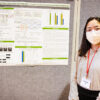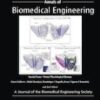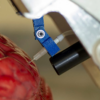Welcome to the Utah Head Trauma Lab
About Our Lab
The biological structures of the head and eye are continually changing with age. Rapid growth and development in young children, and rapid degradation in the elderly, makes identification of age-dependent structural and mechanical properties crucial to understanding patient specific injury and disease. In the Utah Head Trauma Lab, we explore the microscopic and macroscopic structure of the head and eye at different stages of development. We use principals of engineering to characterize the biomechanical response of these structures to injury and disease. These data not only help us understand the initiation of injury and disease, but also allow us to design and implement accurate and complex computer models that can accelerate the development of age-appropriate injury prevention, diagnosis and treatment strategies for traumatic brain and ocular injury.
Recent Activity

Lizzie Rocks UROP Symposium
Congratulations to Elizabeth (Lizzie) Su for a successful UROP research experience and presentation! Lizzie used convolutional neural networks to predict injury …
Acoustic Warnings Reduce Head Trauma
Congratulations to Mohammad Homayounpour, PhD Graduate of Dr. Andrew Merryweather’s Ergonomics and Safety group on his publication Cervical muscle activation …
In Situ Mechanics of the Subarachnoid Space
Congratulations to PhD Graduate Nik Benko on his publication Mechanical characterization of the human pia-arachnoid complex published in the Journal of …

